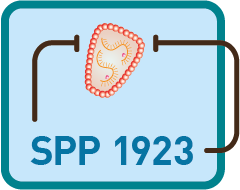Modulation of cell-intrinsic innate immunity to improve “shock-and-kill” strategies of HIV‑1 cure


Project Member

Prof. Dr. Christine Goffinet
Project Leader
Prof. Dr. Christine Goffinet
Phone: +49 30 450525 – 489
Christine.Goffinet@charite.de
Twitter Goffinet Lab
Charité — Universitätsmedizin Berlin
Berlin Institute of Health
Institute of Virology
Charité Campus Mitte
Rahel-Hirsch-Weg 3
10117 Berlin
Germany

Julia Kazmierski, M.Sc.
Project Summary
The overall goal of this follow-up research proposal is to define the contribution of base-line, cell-intrinsic innate immunity to HIV‑1 latency establishment and reversal. The overarching hypothesis is that current “shock-and-kill” strategies suffer from the presence of cell-intrinsic innate immunity and/or its concurrent activation by the “shock” element, which impairs full-blown HIV‑1 reactivation due to the contribution of tonic expression levels of PRRs, including cGAS, and cellular restriction factors with post-integrational antiviral activity. Based on our recent findings and our previous expertise on cell-intrinsic immunity in T‑cells in the context of HIV‑1 infection, we will establish the cGAS-dependent gene expression profile in HIV-1-relevant target cells and define the expression profiles of key pattern recognition receptors and antiviral interferon-stimulated genes upon treatment with individual latency-reversing agents and combinations thereof. Using established model cell lines and cells from aviremic HIV‑1 patients, we will investigate to which degree cGAS contributes to HIV‑1 latency establishment and analyze the impact of cGAS on pharmacological reactivation of HIV‑1. Finally, we will probe inhibition of cGAS activity and signaling as a strategy to improve LRA-mediated HIV‑1 reactivation in T‑cells. This work has the potential to widen our understanding on the interplay of HIV‑1 latency and cell-intrinsic innate immunity, and to improve currently inefficient “shock-and-kill” approaches of HIV‑1 cure.


